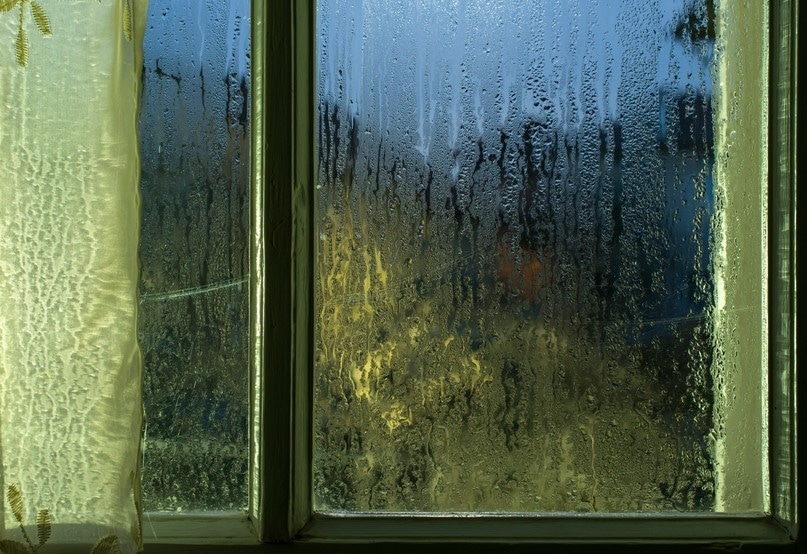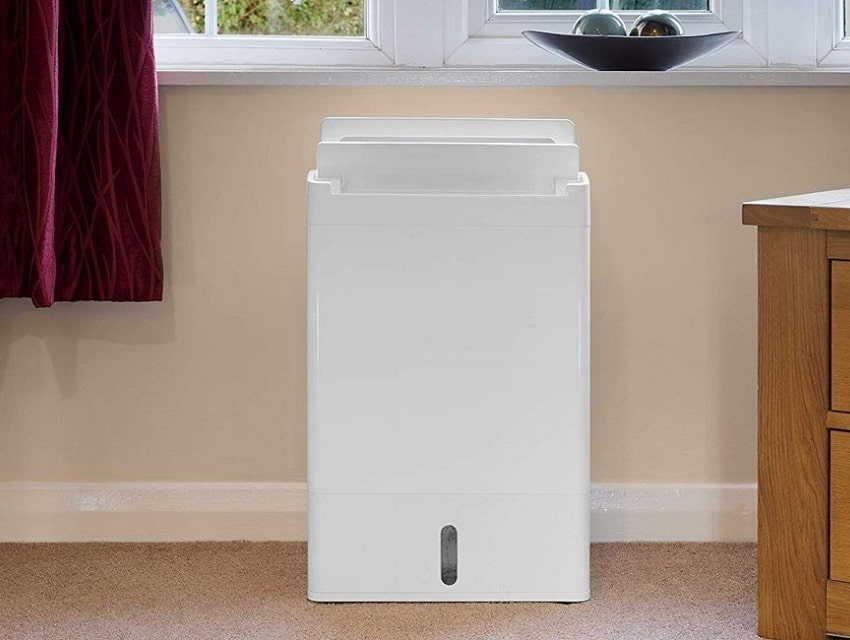Dehumidifiers are the best solution to high humidity in the home, office, or library. But where is the best place to put a dehumidifier in a house?
They are not, as is often assumed, aimed directly at the damp area. But they should be close enough. The optimal place is in the middle of the affected room; provided there are no major obstacles in the way that impedes the flow of air.
However, if there are larger obstacles in the way, the airflow may be interrupted. So while one part of the room is being dried, the other part remains damp. The nature of the room also plays a decisive role. If the space is very angled, optimal air circulation must also be guaranteed in the niches.
If in doubt, you will find valuable information on where to place a dehumidifier. This also includes the correct distance from walls and furniture.
The signs of a damp house are quite easy to recognize. Once these have been identified, you can trace them back to the source of the problem and take the appropriate measures. Among the signs of dampness that should watch out for are:
The efficiency of your dehumidifier largely depends on where you place it. To be most effective, place it close to the source of moisture.
Because of its level to the ground, the basement is usually one of the humid places in a home. So, this is a good place to start.
If you are using a small dehumidifier for the basement and you have few moisture problems, you can place it on the floor.
The air dehumidifier helps prevent mold from growing and settling, especially on shower or tub joints and on the ceiling.
You can place a small dehumidifier in your bathroom. However, try to ensure that it is not too close to water sources.
In a large bedroom, place a bedroom dehumidifier near where the humidity is. In a small room, the ideal is to place the device in the center. For best results, keep windows and doors in the bedroom closed.
Dehumidifiers require clearance for air to enter and exit the unit. They must also be plugged into an electrical outlet.
The most ideal for this room would be a 20 to 30-pint dehumidifier. According to our experts, the Midea MAD20C1ZWS Dehumidifier with Reusable Air Filter is one of the most effective for small to medium rooms. The model is ideal for the bedroom, kitchen, and bathroom.
Humidity thrives in places with large aerated spaces and those in contact with damp areas.
The living room is the most spacious in the house and this is where humidity thrives. Ideally, you will want the dehumidifier near the center of the living room.
The front door is the common source of humidity in the living room. Outside air that is full of humidity leaks in through the front door. So, it is best to place a dehumidifier in the center of the room.
The kitchen may be a room with dehydrating equipment sources such as the stoves when it is in use. But when out of use, the air may turn out humid.
The running water, refrigerator, and ventilated planning of the kitchen make it one of the most humid in the house.
You can place a dehumidifier in the room center, but ensuring the windows and door is closed. You can also place a mini dehumidifier in food storage cabinets to prevent foods from getting humid. One of the most effective and reliable mini dehumidifiers for the kitchen is the E-333 Wireless Mini Dehumidifier from Eva-Dry. This is wireless and can be easily hung in closed places. It is one of the best small mini dehumidifier for traveling in an RV with comfort.
The garage is often a cold place, especially when it is not insulated. You can place your dehumidifier in the middle of your garage to facilitate airflow.
It is advisable to use an air dehumidifier in a garage, as most of the time you cannot ventilate these rooms. Also, the humidity therein can impact the objects and damage them.
The laundry room is also a humid place because of the humidity from the draining washing machine. The moisture from spun wet clothes also ends up in the room. This is therefore one of the places to use a dehumidifier.
Some air dehumidifiers offer a tumble dryer function. Place your air dehumidifier near your laundry and block the swinging panel towards your laundry. This feature allows you to dry your laundry in a short time and without damaging it.
Although too little humidity may cause library items to dry out too quickly, books and library materials are also affected by moisture. Books must be kept below 75 degrees in a library or office Trusted Source How to Store Books Properly: 10 Tips | Neighbor Blog We'll teach you how to store books and keep them safe for future generations to enjoy. Our 10 tips include: Climate control, proper shelving, dusting, and more. www.neighbor.com . Above that, you need a desiccant dehumidifier in the middle of the library or home office.
Your location will determine whether you need a whole-house dehumidifier or a less powerful one that can be effective in a single room.
If you reside in areas with a humid climate such as Louisiana, Florida, or Texas, you’ll need a whole-house dehumidifier will 30 pints and more capacity. This will increase your comfort at home.
A dehumidifier should be placed as centrally as possible. But now follows a trick. For demanding applications, such as in angled rooms, simply place one or more fans on the opposite sides of the dehumidifier. A distance of at least 8 feet should be maintained. In this way, optimal air circulation can be guaranteed. The dehumidification is accelerated and the drying process is shortened. The fan(s) should be set up so that the air is blown in the direction of the dehumidifier.
Where to place dehumidifier are close to damp locations or those where there are sources of humidity such as bathwater, running sink water, cold and humid air from the refrigerator, and other places with a naturally humid climate.





